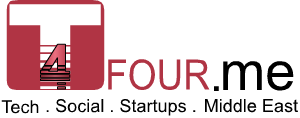BECO Capital, a regional venture capital firm focused on technology investments in the Gulf Cooperation Council (GCC) countries, today said that boosting online Arabic content, combined with the rising digital advertising sector which is expected to grow 347% by 2018, will allow for the creation of sizeable content businesses and present attractive opportunities to venture capitalists in the region.
Cooperation Council (GCC) countries, today said that boosting online Arabic content, combined with the rising digital advertising sector which is expected to grow 347% by 2018, will allow for the creation of sizeable content businesses and present attractive opportunities to venture capitalists in the region.
Research suggests that the growth in Arabic online population is much faster than that of online Arabic content, creating a gap that needs to be filled and prospects that local entrepreneurs are looking to grab.
“This presents huge opportunities for Arabic online publishers of content across industry sectors, whether the content represents data, video, music, infographics or other. These publishers will be able to create strong businesses with innovative revenue streams. Venture capital will also be there to back these businesses with growth capital and operational support in order to help them scale,” says Amir Farha, Co-Founder and Managing Partner of BECO Capital.
There are a whole host of categories that are under-served by Arabic content, including automotive, finance, travel, healthcare, education, sport, lifestyle and many more. The surge of mobile applications, which have traditionally built a growing stream of local language content around the world, will have a similar impact in the region.
The industry has seen the emergence of new success stories across many of these industries, such as UTurn in Saudi Arabia, Shahiya in Lebanon, Al Tibbi in Jordan, Diwanee and 7awi in Dubai, and Nabd in Kuwait. Some of these companies have already been acquired and others have taken on venture capital. The ecosystem expects more success stories to emerge in the coming years. For one, BECO Capital has invested in RoundMenu, a content company in the food and beverage sector which has achieved significant growth in the Arabic content side, specifically in local markets such as Egypt and Saudi Arabia (KSA).
Currently, the Internet demands even more quality content in Arabic for the current 141 million online users who speak the language. At the moment, Arabic is the seventh-most popular language on the web, but less than one per cent of all online content is in Arabic, and less than 0.2% of global digital content is hosted in the Arab region, although native Arabic speakers represent about 4.5% of the world population. Out of more than 6000 languages spoken in the real world, Arabic is the 4th most popular language globally with 467 million Arabic speakers, according to a study conducted over 15 years by Ulrich Ammon, professor of languages at the University of Dusseldorf, preceded by Chinese, Urdu and English respectively. Spanish ranks fifth.
40% of people in the Middle East have internet access, 87 % of them at home. KSA and UAE users in particular spend a total of seven to eight hours online every day, five hours on their desktop and three hours on their mobile. Half the population is under 25, the main age group for internet use on phones and tablets. Young people are increasingly seeking original regional content as opposed to international content that has been repackaged for the region. The new generation’s preference for Arabic content greatly outweighs that for English. According to Arab Media Outlook 2009-2013, 60% of Arabic speakers prefer browsing internet content in Arabic. That figure surges to 97 per cent in Saudi Arabia and Egypt.

Great post, Kapil. However, until there is a stable political and social climate in MENA, sustainable and quality Arabic content development in the region as well as online Arabic content growth will continue to remain a difficult mission.